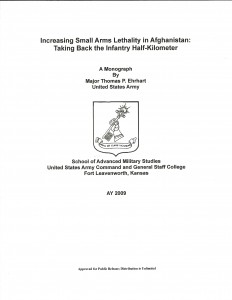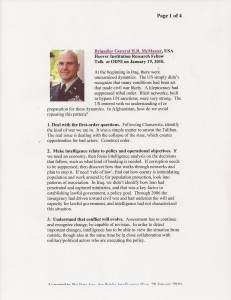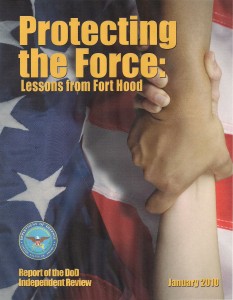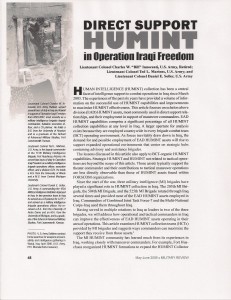
(1) US consciously changed from standard main battle rifles firing “full military cartridges” (ie., M-14/7.62×51 NATO, M-1 Garand/cal. 30 M-1) to assault rifles (AR-15, M-16, Stoner System) in the 1960s as we attempted to optimize for short-range engagements in the constrained mountainous/jungle environments of Southeast Asia. At the time, our primary allies were slight of physical stature;
(2) Concurrently, training and engagement doctrine shifted from carefully aimed individual shots to volume of fire (bursts of various numbers of rounds, the “spray and slay” technique) and various “point and shoot” techniques such as “instinctive aiming,” “quick kill,” etc.;
(3) Ammunition followed suit and emphasis in terminal ballistics shifted from accuracy and kinetic energy to volume of fire and bullet yaw/fragmentation; (4) I attach the SAMS paper by MAJ Ehrhart cited in the article.)
Phi Beta Iota: This one paper is a superb indictment of US DoD leadership from the Secretary of Defense, who claims he does not do “maintenance” but is in fact overseeing “business as usual” for Lockheed et all, to the Undersecretaries (Intelligence does not do intelligence support to acquisitions; Acquisitions could care less about inexpensive individual systems; and Policy simply does not have a clue) to the service leaders responsible for training, equipping, and organizing the forces to be sent into battle by the Combatant Commanders. The Strategic Generalizations developed by the Marine Corps Intelligence Center in 1989 remain valid–and ignored.
Related Media Article:
April 2, 2010
Army Report: GIs Outgunned In Afghanistan
By David Wood
American troops are often outgunned by Afghan insurgents because they lack the precision weapons, deadly rounds, and training needed to kill the enemy in the long-distance firefights common in Afghanistan's rugged terrain, according to an internal Army study.






